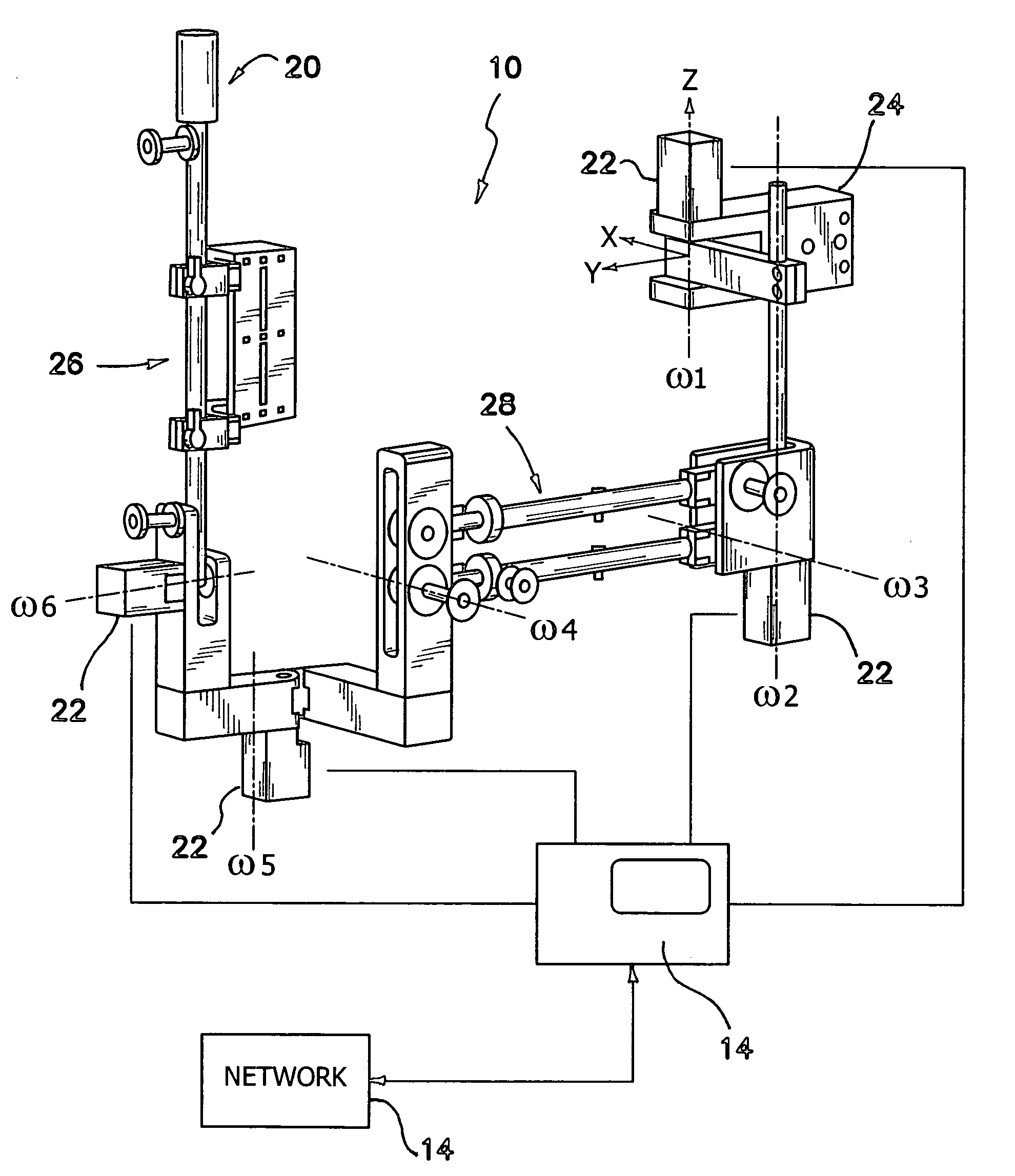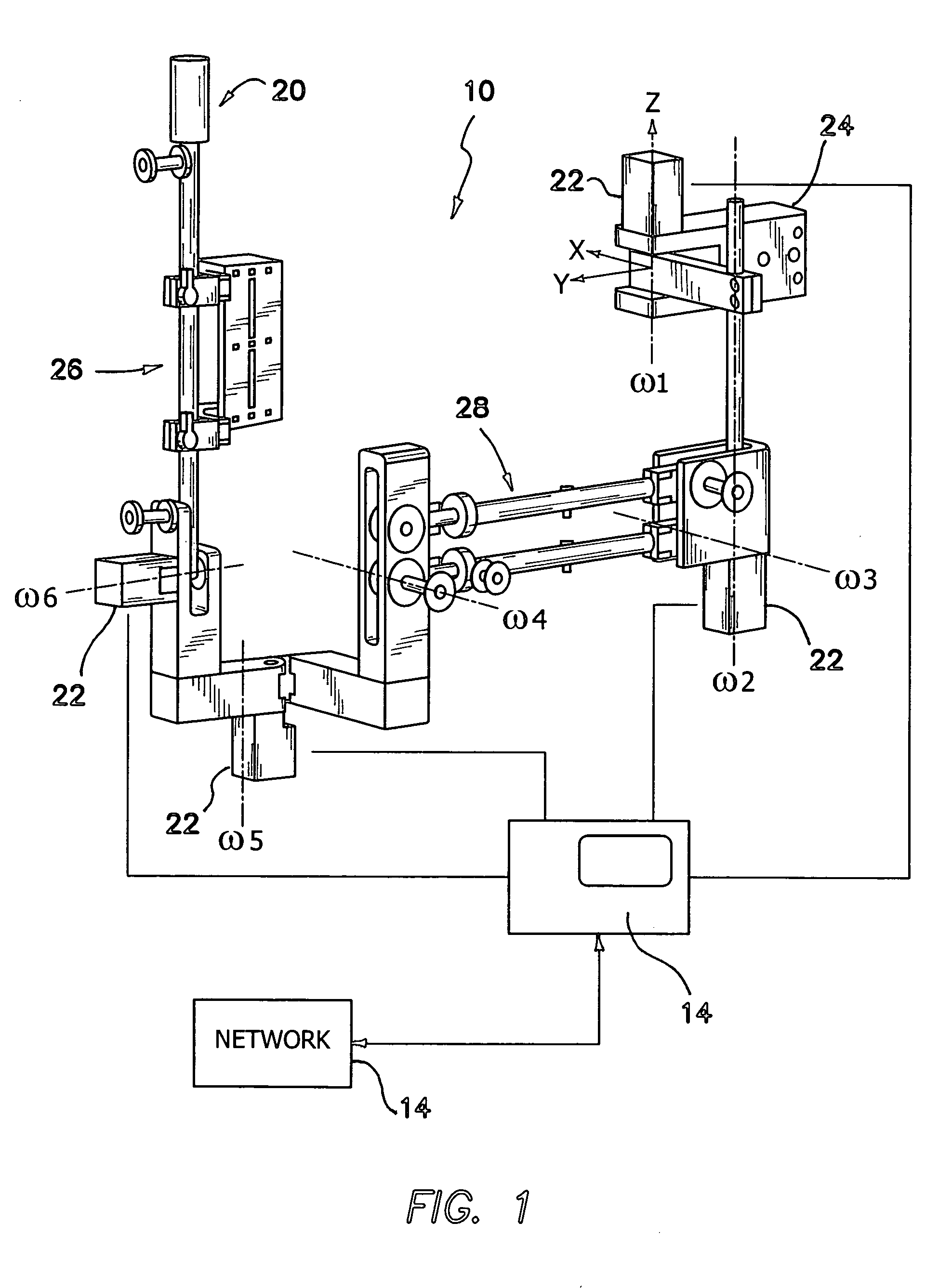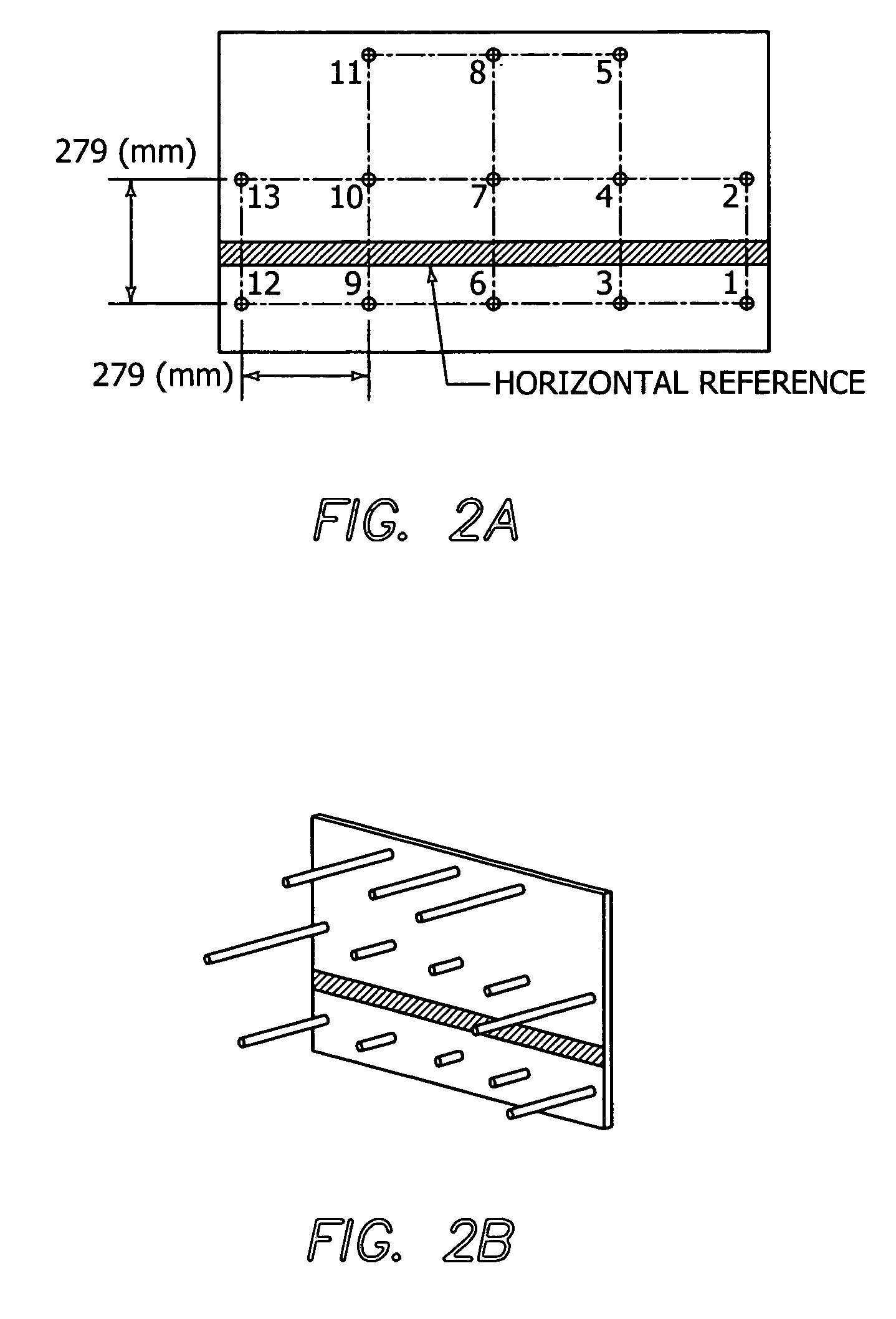Method and apparatus for automating arm and grasping movement training for rehabilitation of patients with motor impairment
a technology rehabilitation methods, applied in the field of rehabilitation methods and apparatuses for patients with motor impairment, can solve the problems of difficulty in lifting the arm against gravity, opening and closing the hand, and moving the upper limb in a useful way, so as to raise or lower the threshold of grasping force
- Summary
- Abstract
- Description
- Claims
- Application Information
AI Technical Summary
Benefits of technology
Problems solved by technology
Method used
Image
Examples
Embodiment Construction
[0032]An important goal in rehabilitation engineering is to develop technology that allows individuals with severe motor impairment to practice arm movement without continuous supervision from a rehabilitation therapist. A first embodiment is illustrated by a system, called Therapy WREX or (“T-WREX”) 10. The system 10 is comprised of an orthosis that assists in arm movement across a large workspace, a grip sensor 20 that detects hand grip pressure, and software controlled computer 14 that simulates functional activities. The arm orthosis is an instrumented, adult-sized version of the Wilmington Robotic Exoskeleton (WREX), which is a five degrees-of-freedom mechanism that counterbalances the weight of the arm using elastic bands.
[0033]After providing a detailed design description of T-WREX 10, this disclosure describes two pilot studies of the system's capabilities. The first study demonstrated that chronic stroke subjects whose arm function is compromised in a normal gravity environ...
PUM
 Login to View More
Login to View More Abstract
Description
Claims
Application Information
 Login to View More
Login to View More - R&D
- Intellectual Property
- Life Sciences
- Materials
- Tech Scout
- Unparalleled Data Quality
- Higher Quality Content
- 60% Fewer Hallucinations
Browse by: Latest US Patents, China's latest patents, Technical Efficacy Thesaurus, Application Domain, Technology Topic, Popular Technical Reports.
© 2025 PatSnap. All rights reserved.Legal|Privacy policy|Modern Slavery Act Transparency Statement|Sitemap|About US| Contact US: help@patsnap.com



